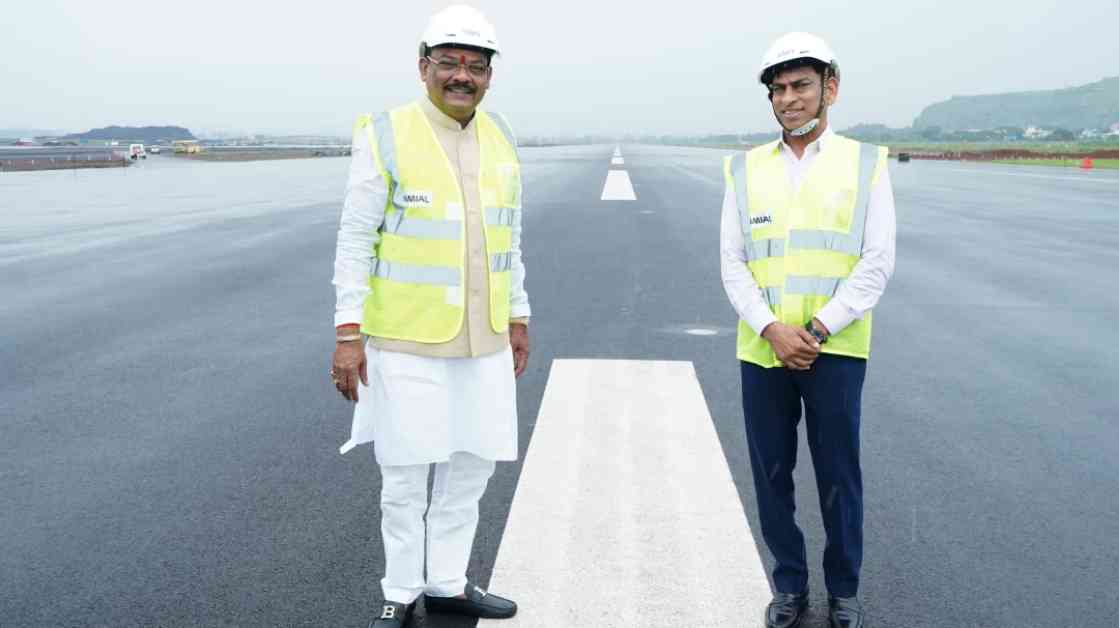Navi Mumbai Airport: Sukhoi Aircraft Test in October, Domestic Flights Begin March
The Navi Mumbai International Airport has reached a significant milestone with the successful completion of signal and instrument landing system tests on the first runway. The tests were conducted by the Airport Authority of India on October 5, with the country’s Prime Minister Narendra Modi present to witness the event. Following these successful tests, the airport is now gearing up to host a test of the Air Force’s fighter jet, Sukhoi. CIDCO Chairman Sanjay Shirsat made the official announcement during a press conference at CIDCO Bhavan, emphasizing the airport’s readiness for this next phase of testing.
CIDCO Chairman Shirsat recently inspected the Navi Mumbai International Airport project, expressing high hopes for the first flight to take place within the next six months. As preparations continue, CIDCO President Shirsat highlighted the government’s plan to open the airport for regional traffic in March. This timeline aligns with the completion of the first Air Force aircraft landing on the runway in October. Looking ahead, the Adani Group and CIDCO Board are strategizing for international flights to commence from the airport by June, further enhancing its connectivity and significance in the region.
The upcoming launch of Navi Mumbai International Airport is poised to make a substantial contribution to the state’s development, particularly in Navi Mumbai. With the capacity to handle 3500 aircraft at a time, the airport is well-equipped to accommodate the growing demand for air travel. Its four interconnected terminals offer passengers seamless connectivity and convenience, ensuring a smooth travel experience within the airport premises.
Strategic Development and Connectivity
The Navi Mumbai International Airport stands out as the first greenfield international airport in the country, spanning an expansive area of 1160 hectares. The project is being executed in two phases, with a focus on enhancing passenger experience and operational efficiency. The airport’s design includes two parallel runways to facilitate the separate movement of aircraft, along with parallel taxiways for streamlined access to and from the runways.
One of the key advantages of the airport is its strategic connectivity to various transport routes, including coastal access, roads, and future plans for metro and bullet train connections. This multi-modal transport approach aims to provide passengers with diverse options for reaching the airport, ensuring accessibility and convenience for travelers from different regions. The airport’s comprehensive infrastructure is designed to support efficient operations and enable seamless transitions for passengers traveling through its terminals.
Public-Private Partnership and Project Progress
The development of Navi Mumbai International Airport is being carried out through a public-private partnership, with the concessionaire company ‘NMIAL’ overseeing the project’s implementation. This collaborative approach leverages the expertise and resources of both the public and private sectors to deliver a world-class airport facility that meets international standards. The emphasis on timely completion of project milestones underscores the commitment to operationalizing the airport and commencing flight operations as soon as possible.
CIDCO Chairman Sanjay Shirsat emphasized the national significance of the Navi Mumbai International Airport project, highlighting its potential to boost economic growth and connectivity in the region. The project’s progress thus far has been satisfactory, with a focus on adhering to timelines and ensuring the efficient completion of construction works. As the airport prepares to welcome its first flights, stakeholders are working diligently to address any remaining tasks and finalize preparations for a successful launch.
In conclusion, the upcoming inauguration of Navi Mumbai International Airport represents a significant milestone in the region’s aviation infrastructure development. With state-of-the-art facilities, strategic connectivity, and a strong focus on operational efficiency, the airport is poised to become a key hub for domestic and international travel. As preparations continue for the commencement of flight operations, stakeholders are optimistic about the airport’s potential to drive economic growth, enhance regional connectivity, and elevate the overall travel experience for passengers.




















